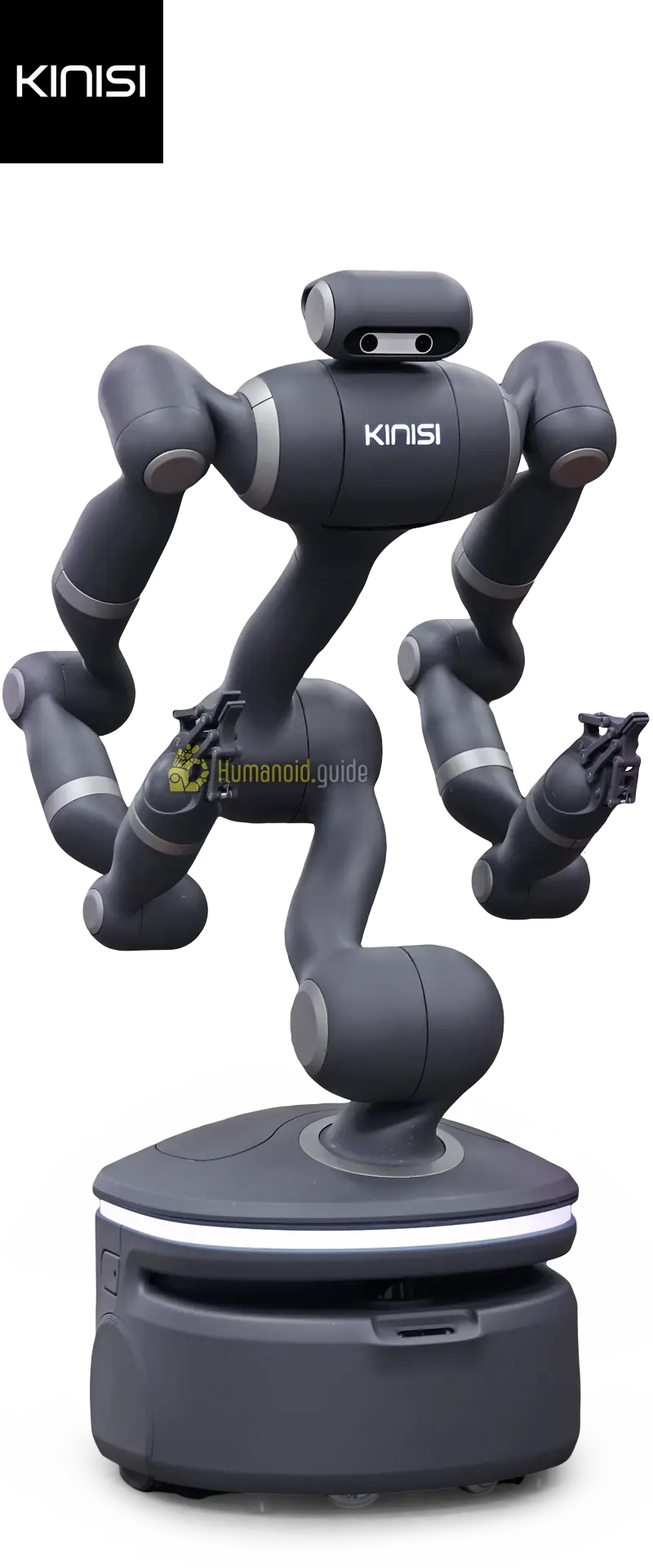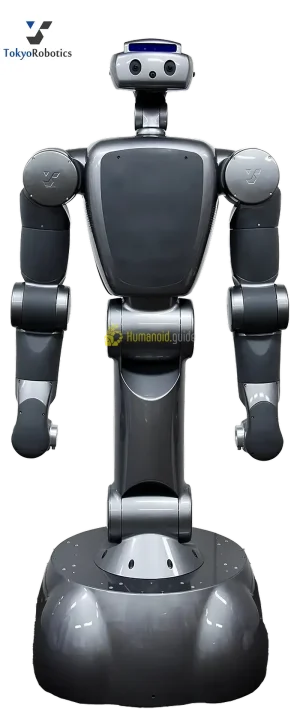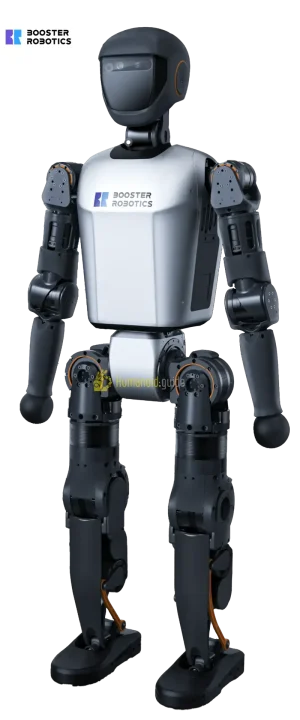Kinisi KR1

$ 75 000

The Kinisi KR1 is a wheeled humanoid robot from US-based Kinisi Robotics, designed for practical warehouse tasks like pick-and-place and sorting. Combining LLM intelligence with high-speed mobility up to 14.4 km/h, this 162 cm tall prototype offers autonomous operation, human-level precision, and safety in shared spaces, addressing labor shortages efficiently.
Humanoid.Guide skill score: 4/10 This score is calculated as the combined total of Navigation and Manipulation performance.

Specifications and details:
| Availability | Prototype |
|---|---|
| Nationality | US |
| Website | https://www.kinisi.com/ |
| Degrees of freedom, overall | 21 |
| Degrees of freedom, hands | 2 |
| Height [cm] | 162 |
| Manipulation performance | 2 |
| Navigation performance | 2 |
| Max speed (km/h) | 14.4 |
| Strength [kg] | 20 |
| Weight [kg] | 100 |
| Runtime pr charge (hours) | 8 |
| Safe with humans | Yes |
| CPU/GPU | Nvidia Jetson |
| Ingress protection | IP 65 |
| Camera resolution | Not specified |
| Connectivity | Wi‑Fi |
| Operating system | Linux |
| LLM integration | Not specified |
| Latency glass to action | Sub-100ms |
| Motor tech | BLDC |
| Gear tech | Strain Wave |
| Main structural material | Aluminium |
| Number of fingers | Not specified |
| Main market | logistics, Warehouse |
| H.G skill score | N/A |
| Verified | Not verified |
| Walking Speed [km/h] | N/A |
| Shipping Size | N/A |
| Color | N/A |
| Manufacturer | Kinisi Robotics |
Description
Explore the Kinisi KR1: a low-cost, LLM-powered wheeled humanoid robot for warehouses, featuring 21 DoF, 8-hour runtime, and precise manipulation up to 10 kg. Prototype available at $75,000, revolutionizing logistics with speed, safety, and adaptability.
2026 Humanoid Robot Market Report
160 pages of exclusive insight from global robotics experts – uncover funding trends, technology challenges, leading manufacturers, supply chain shifts, and surveys and forecasts on future humanoid applications.

Featuring insights from
Aaron Saunders, Former CTO of
Boston Dynamics,
now Google DeepMind

2026 Humanoid Robot Market Report
160 pages of exclusive insight from global robotics experts – uncover funding trends, technology challenges, leading manufacturers, supply chain shifts, and surveys and forecasts on future humanoid applications.
The Kinisi KR1 humanoid robot, developed by Santa Cruz-based Kinisi Robotics, emerges as a practical solution to modern warehouse challenges. Founded in 2023 by Bren Pierce, who previously shipped over 25,000 robots, the company focuses on building adaptable machines that integrate the latest LLM intelligence for real-world tasks. Unlike unstable bipedal designs, the KR1 uses a wheeled base for swift and stable navigation, achieving walking speeds of 10.8 km/h and max speeds up to 14.4 km/h. At 162 cm tall and weighing 100 kg, this prototype prioritizes affordability and scalability, with a purchase price around $75,000, making it accessible for logistics operations facing labor shortages.
Mechanically, the KR1 boasts 21 degrees of freedom overall, including 2 DoF in its hands, powered by BLDC motors and strain wave gears for precise movements. Its aluminum structure ensures durability with IP65 ingress protection, while Nvidia Jetson CPU/GPU handles onboard processing under a Linux operating system. Connectivity via WiFi enables seamless integration, and sub-100ms latency from perception to action supports real-time obstacle avoidance and dynamic navigation in busy environments. The robot’s 8-hour runtime per charge, bolstered by hot-swappable batteries and auto-docking, allows for extended shifts without interruption.

Get the Right Humanoid
Our Connect Service gives you a fixed-fee, unbiased shortcut to finding, testing, and choosing the right humanoid robot:
In terms of dexterity and manipulation, the KR1 excels at tasks like sorting goods in logistics centers and assembling products in factories. With a strength capacity of up to 10 kg (22 pounds) payload, it demonstrates human-like precision in grasping and placing items, from fragile objects to heavy loads on high shelves. LLM integration empowers autonomous learning and adaptation, allowing the robot to handle varied scenarios without extensive reprogramming. This focus on loco-manipulation makes it ideal for enhancing operational flexibility and reducing costs in demanding settings.
Commercially, Kinisi positions the KR1 as a safe collaborator for human workers, certified for co-existence in shared spaces. Having raised $2 million in funding and won the Automate Start-up Challenge in May 2025, the company is gearing up for broader pilots in warehouse and logistics markets. As a prototype, it represents the future of physical intelligence, promising to transform industries by delivering smart, speedy, and scalable robotics that solve today’s problems effectively.





